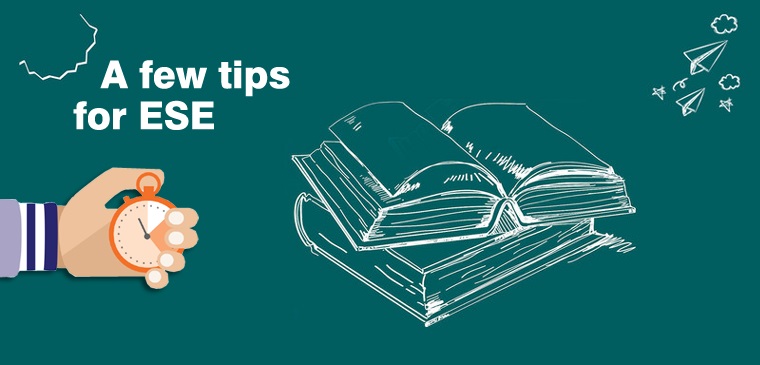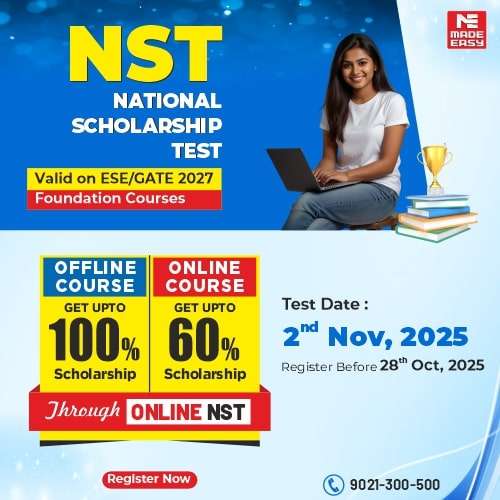A few tips for ESE-2020
A good strategy is always essential for success in any examination. In the last few days of ESE (IES) Exam, a touch of finesse to your preparation is very essential.
Firstly, try to maintain yourself cool & calm at the last moment especially when only 30 – 40 days are left. You should now focus more on revision rather than reading new areas.
Since ESE has three stages and each stage is a knockout stage. Hence qualifying Prelims is very important. After prelims there is a sufficient gap of six months for the ESE Main examination, hence conventional practice can be nicely done after prelims, therefore, it is time to focus on practicing objective questions mainly.
One should realize the importance of Prelims Paper-1 i.e. General Studies and Engineering Aptitude. There may be minimum benchmark cut-offs in both papers of Prelims and then a final cut-off. Therefore, properly balanced preparation for both papers is desired.
ESE 2018
ESE Preliminary/ Stage-I (Objective Type Papers)
| Discipline | Preliminary Exam – out of 500 marks | |||||
|---|---|---|---|---|---|---|
| General | OBC | SC | ST | PH-1 | PH-3 | |
| Civil Engineering | 207 | 194 | 169 | 188 | 114 | 087 |
| Mechanical Engineering | 256 | 255 | 220 | 223 | 138 | 098 |
| Electrical Engineering | 230 | 218 | 190 | 191 | 127 | 071 |
| Electronics & Telecommunication Engineering | 213 | 206 | 173 | 155 | 125 | — |
* Subject to candidates (General, OBC, SC, and ST) having secured a minimum of 15% marks and PH candidates minimum 10% marks in each of the two objective papers.
ESE Main/ Stage-II (Conventional Type Papers)
| Discipline | Conventional Exam (Main) – out of 1100 marks (500 marks of Stage-I + 600 marks of Stage – II) | |||||
|---|---|---|---|---|---|---|
| General | OBC | SC | ST | PH-1 | PH-3 | |
| Civil Engineering | 546 | 502 | 467 | 513 | 308 | 161 |
| Mechanical Engineering | 611 | 611 | 542 | 564 | 374 | 288 |
| Electrical Engineering | 541 | 488 | 452 | 481 | 303 | — |
| Electronics & Telecommunication Engineering | 504 | 476 | 405 | 403 | 301 | — |
** Subject to candidates (General, OBC, SC & ST) having secured minimum 20% marks and PH candidates minimum 10% marks in each of the two conventional papers.
ESE 2018 Final stage after PT/ Stage-III
| Discipline | Final after PT – out of 1300 marks | |||||
| General | OBC | SC | ST | PH-1 | PH-3 | |
| Civil Engineering | 710 | 679 | 609 | 671 | 476 | 425 |
| Mechanical Engineering | 767 | 782 | 699 | 699 | 505 | 551 |
| Electrical Engineering | 711 | 691 | 603 | 624 | 473 | — |
| Electronics & Telecommunication Engineering | 660 | 648 | 567 | 524 | 429 | — |
ESE 2017
ESE 2017 Preliminary/ Stage-I (Objective Type Papers)
| Discipline | Preliminary Exam – out of 500 marks | |||||
|---|---|---|---|---|---|---|
| General | OBC | SC | ST | PH-1 | PH-3 | |
| Civil Engineering | 202 | 177 | 148 | 151 | 102 | 068 |
| Mechanical Engineering | 231 | 207 | 165 | 147 | 108 | 099 |
| Electrical Engineering | 257 | 241 | 210 | 208 | 169 | 073 |
| Electronics & Telecommunication Engineering | 221 | 205 | 167 | 171 | 123 | — |
* Subject to candidates (General, OBC, SC, and ST) having secured a minimum of 15% marks and PH candidates minimum 10% marks in each of the two objective papers.
ESE 2017 Main/ Stage-II (Conventional Type Papers)
| Discipline | Conventional Exam (Main) – out of 1100 marks (500 marks of Stage-I + 600 marks of Stage – II) | |||||
|---|---|---|---|---|---|---|
| General | OBC | SC | ST | PH-1 | PH-3 | |
| Civil Engineering | 520 | 459 | 415 | 439 | 315 | 145 |
| Mechanical Engineering | 553 | 485 | 428 | 399 | 275 | 278 |
| Electrical Engineering | 618 | 562 | 511 | 530 | 367 | 268 |
| Electronics & Telecommunication Engineering | 549 | 508 | 447 | 479 | 350 | — |
** Subject to candidates (General, OBC, SC & ST) having secured minimum 20% marks and PH candidates minimum 10% marks in each of the two conventional papers.
ESE 2017 Final stage after PT/ Stage-III
| Discipline | Final after PT – out of 1300 marks | |||||
|---|---|---|---|---|---|---|
| General | OBC | SC | ST | PH-1 | PH-3 | |
| Civil Engineering | 691 | 650 | 564 | 578 | 437 | 311 |
| Mechanical Engineering | 723 | 673 | 576 | 550 | 452 | 502 |
| Electrical Engineering | 769 | 742 | 658 | 698 | 575 | 428 |
| Electronics & Telecommunication Engineering | 713 | 675 | 611 | 590 | 471 | — |
For formulae and concepts that are repeatedly slipping out of your brain, write on sticky notes and paste in front of your study table so that your eyes come across them multiple times daily. You can also take a picture of these short notes and store them in your mobile gallery and can revise them in your free time.
Revise the maximum you can, along with new concept building so that the already studied portion is at your fingertips.
The revision phase should be supplemented by solving a new set of questions. “You can better succeed by exploring new questions; questions always act as building blocks for your concepts “For the practice sets, appear for online and offline test series sincerely and solve questions as if you are taking the final exam giving attention and full accuracy. And then, analyze and improve your weak areas so that the mistakes are not replicated in the examination.
Previous solved papers for ESE
For practicing technical objective questions you may refer to previous solved papers of ESE (2001 to 2020 ) and also previous solved papers of CSE (Prelims 2001 to 2010) which are published by MADE EASY and are readily available in the market.
The non-Tech portion in ESE contributes equally to the selection, hence it should not be left unprepared; practice questions on daily basis covering all 10 areas of Paper-1 also. For practicing questions of Paper 1, you may refer to GS & Engg. Aptitude Practice Book published recently by MADE EASY Publications contains more than 3000 solved questions.
In the Non-Technical area also, there are some facts and figures which are to be kept in mind hence you are advised to make short notes and keep revising them so that they don’t get scrambled at the last moment.
Finally, I will suggest read, Revise and Replicate the same on the day of the examination.
Dear Aspirants,
Your preparation for GATE, ESE, PSUs, and AE/JE is now smarter than ever — thanks to the MADE EASY YouTube channel.
This is not just a channel, but a complete strategy for success, where you get toppers strategies, PYQ–GTQ discussions, current affairs updates, and important job-related information, all delivered by the country’s best teachers and industry experts.
If you also want to stay one step ahead in the race to success, subscribe to MADE EASY on YouTube and stay connected with us on social media.
MADE EASY — where preparation happens with confidence.

MADE EASY is a well-organized institute, complete in all aspects, and provides quality guidance for both written and personality tests. MADE EASY has produced top-ranked students in ESE, GATE, and various public sector exams. The publishing team regularly writes exam-related blogs based on conversations with the faculty, helping students prepare effectively for their exams.





